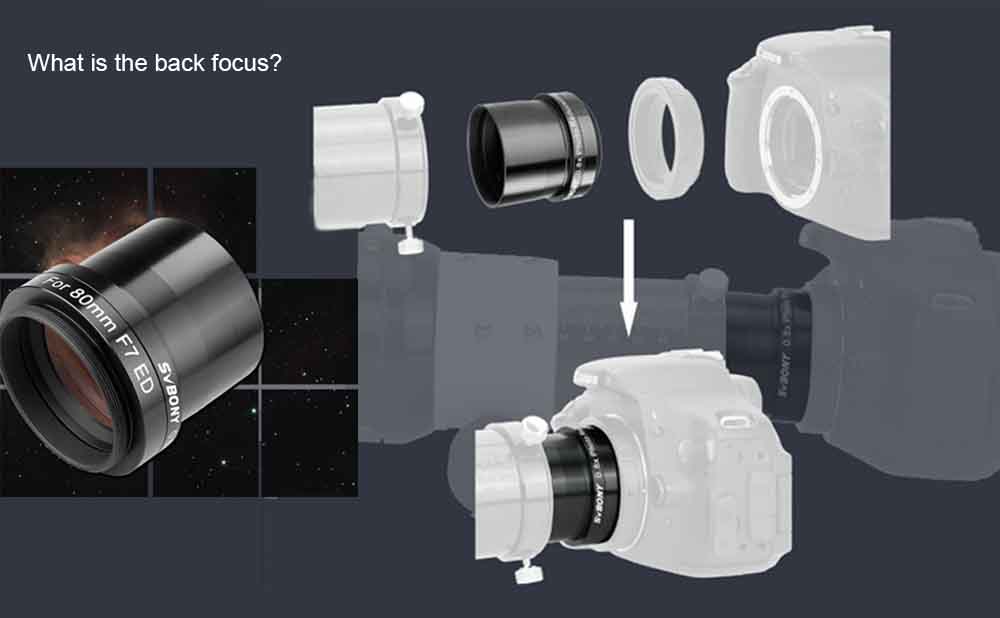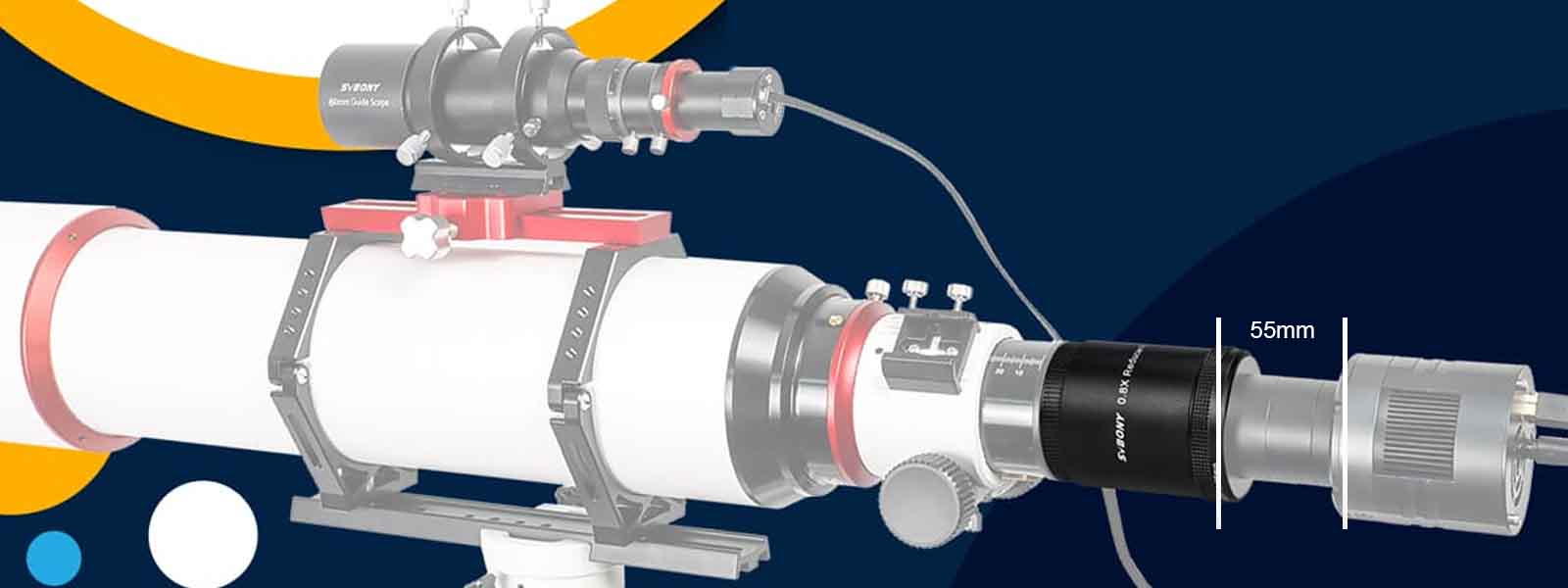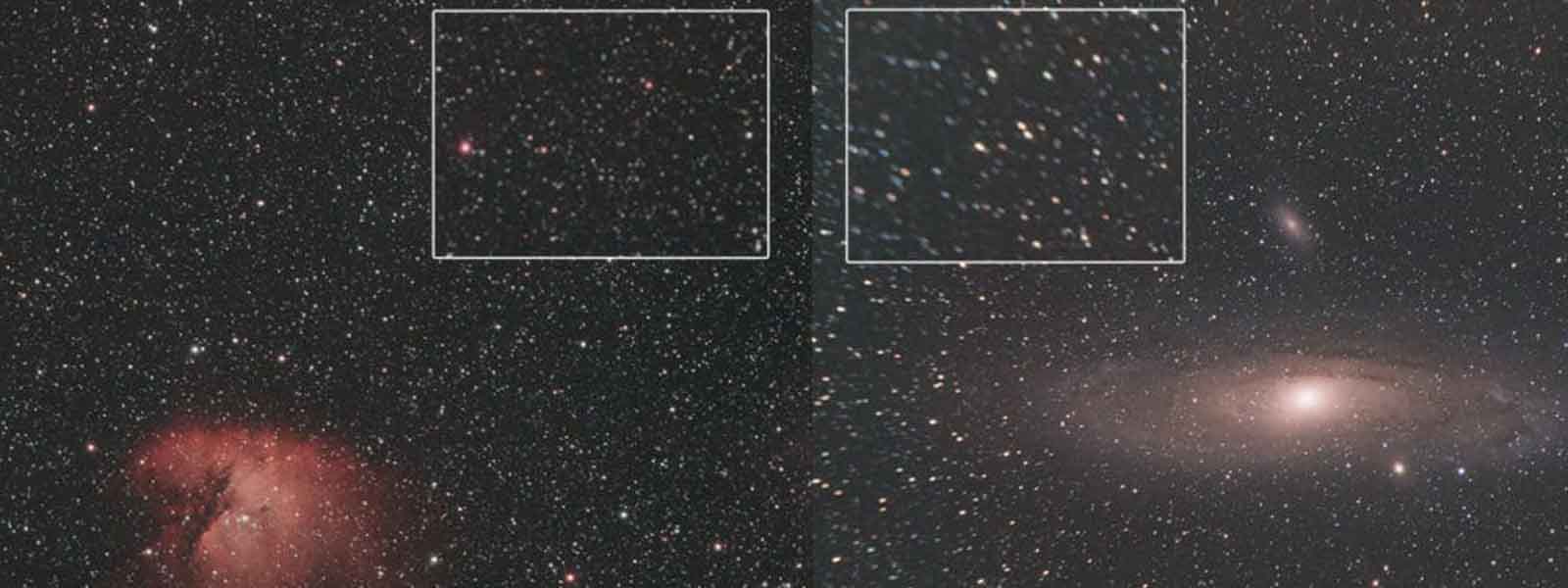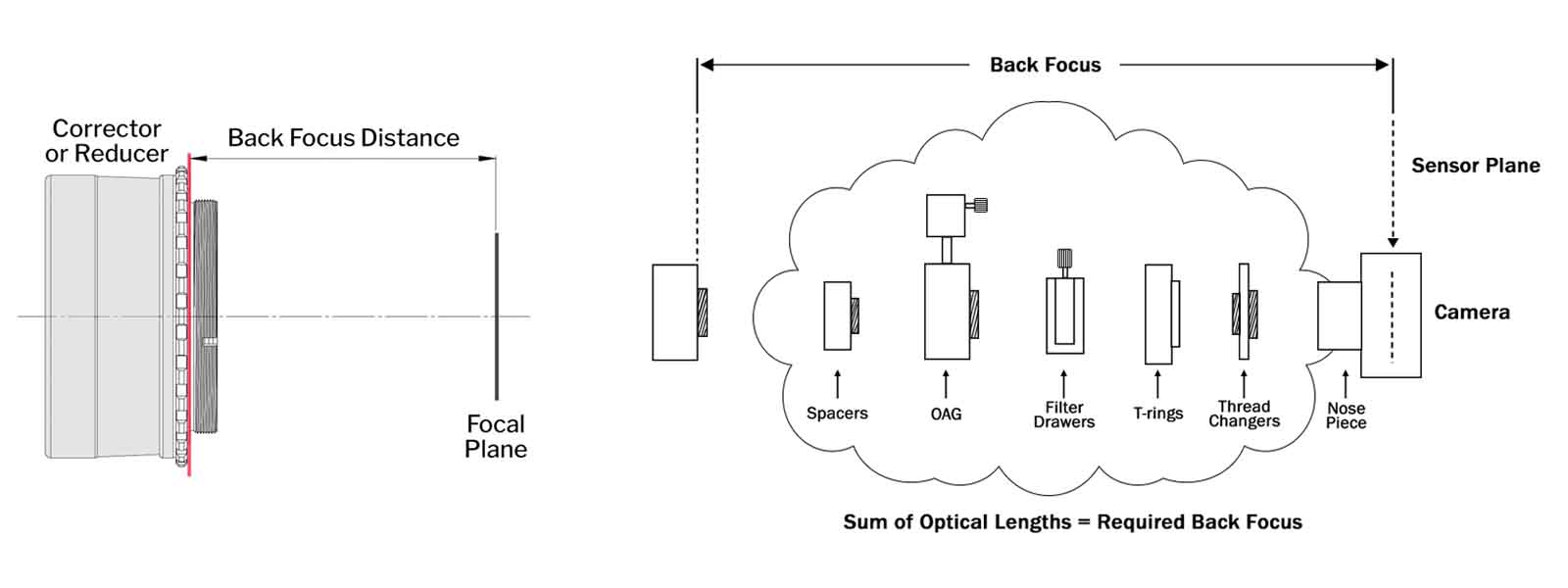What is the back focus?

What is the back focus?
Determining the correct back focus for your telescope can be a daunting task for both beginners and experienced astrophotographers. In this article, we’ll discuss why back focus distance is so important, all the factors you need to consider for back focus distance, and how to use adapters and spacers to get the perfect back focus distance.
1. What is back focus and why is it important for your telescope?
The simplest definition of back focal length is the measurement between the last optical component of a telescope (such as a corrector or reducer) and the focal plane. When using the telescope stock without any accessories, you can easily achieve focus because the telescope's focuser travel is designed to move around this distance. However, when you use a corrector or reducer, the back focus must be at a set distance.

2. How to measure back focus when using a corrector or reducer?
Back focus becomes very important when you use an optical corrector or reducer in a telescope or one integrated into the design. Both optical correctors and focus reducers are designed to work best when the focal plane is at a set distance.
Inserting a field flattener or focus reducer changes the focal plane position of the telescope and usually requires a change in focus regardless of the back focus specification. In some cases, the scope's focuser may not be able to accommodate this change.
One thing to remember is that once a reducer or correction element is attached to a telescope, the available back focus of the telescope is no longer relevant. We now only need to consider the back focus or working distance of the element itself to ensure we can focus on the camera sensor. If the assembly has a back focus of 55mm, the camera sensor must be placed 55mm from the back of the corrector unit.
If you do not keep the focal plane (such as the camera sensor) at the recommended distance from the corrector, the corrector will not work as expected. This often results in the star being elongated or misshapen, most notably at the corners (off-axis) in the image. This becomes especially apparent when using large sensors such as full frame and/or fast optics.

If you see elongated stars off-axis in your images when using correction elements, you may need to adjust the camera's position using a spacer ring. If the stars are blurred in a short arc around the center of the image, the camera is too far away from the correction element. If the off-axis star appears far away from the center, the camera is too close.
On the other hand, for small-sensor planetary cameras, the location of the camera is much more tolerant to the back focus specification because the image on the camera sensor is closer to the optical axis of the system.
3. Back focus is a property of the optics, not the camera.
55mm is the industry standard back focus length for many optical correctors and reducers, and generally suits most setups, but we always recommend that you carefully check the manual and diagram of your corrector/reducer or telescope (if a corrector is built in) to make sure Sure. These can usually be found on the manufacturer's product page.
 4.What is flange distance?
4.What is flange distance?
DSLR cameras have similar specifications called Flange Focal Distance (FFD)
For Nikon F-mount cameras, the FFD is 46.5mm; for Canon EF-mount cameras, the focal length is 44.0mm. To connect such a camera to a field flattener, you need a T-ring that attaches to the camera and is threaded to the field flattener. The T-ring length is 8.5mm for Nikon F cameras and 11mm for Canon EF cameras. These values do not include the length of the T-threads as they thread onto the external threads on the optical assembly. In both cases the sum of the flange focal length and T-ring is 55mm. This means that mounting these two cameras with T-rings to a flat plate with a back focus of 55mm requires no additional spacers.
5. Adding a adapter to the optical path will slightly change the back focus
Filter wheels, filter drawers, and off-axis guides all have thicknesses that will add to the overall length of the imaging system and need to be taken into account when calculating back intercept. Each individual component has its own thickness. Some manufacturers produce these parts in thicknesses that match the spacers included with cooled astronomy cameras, and the spacers can be easily replaced for use as off-axis guides since their components are sometimes interchangeable.
When a filter is added to the optical path, the back focus increases by approximately 1/4~1/3 of the filter thickness. This is just a significant change for the most demanding applications using fast telescopes.
6. Is back intercept important for planetary imaging?
Although this depends on the sensor size used, for planetary imaging the back intercept is much less important than for deep space photography imaging. This is because incorrect back intercept often affects off-axis parts of the image, such as corner points. Because most planetary cameras use very small sensors, unlike cooled astronomy cameras used for deep space, the effect of focus spacing is usually not noticeable.
Hope the above information is useful to you, and look forward to receiving your sharing.









Ed Santillo
I can not get the whole moon onto the screen, just partial view. What do i need to do to change that so that I can view the whole moon ? Thanks !
svbony Elena Author
Maybe you need a focal reducer to get the whole image